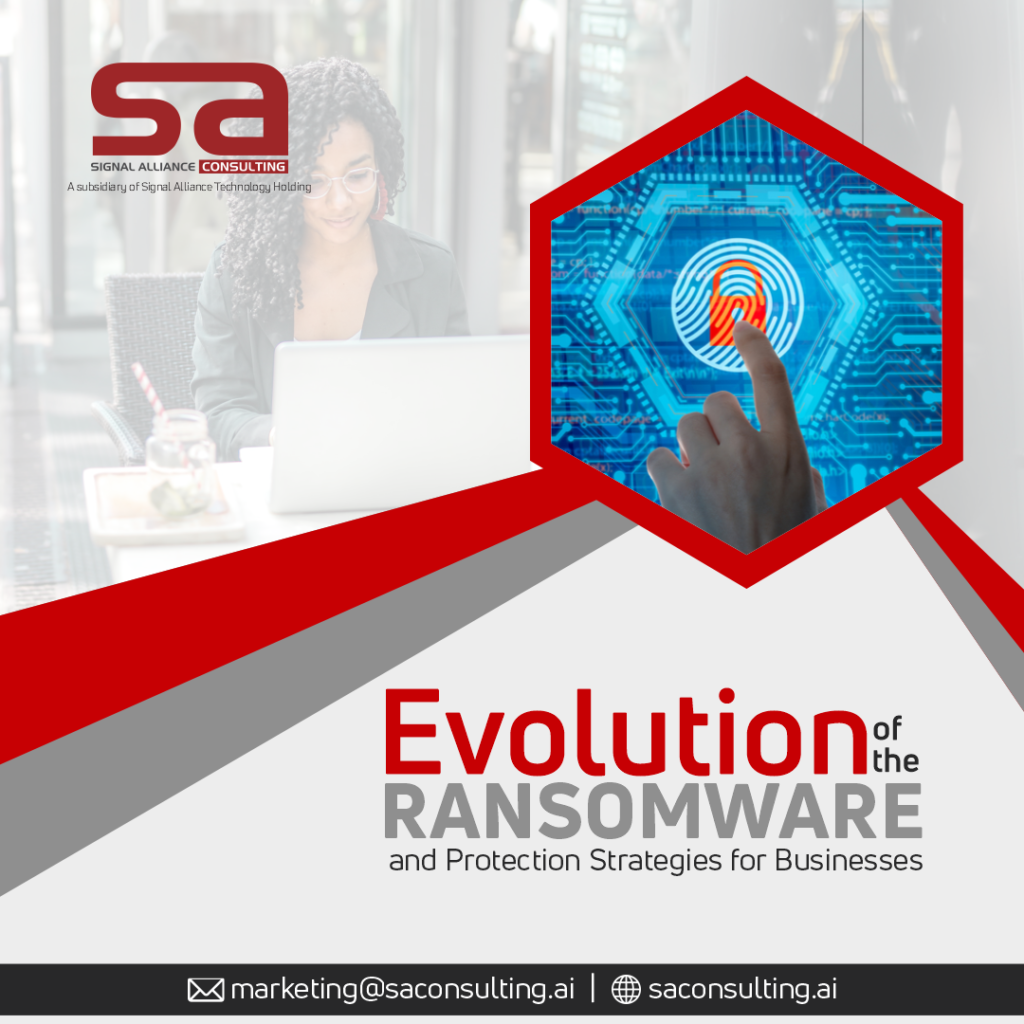Ransomware is a malicious software (malware) that encrypts a victim’s files or systems and demands a ransom payment in exchange for the decryption key. The attackers behind it demand payment, often in the form of cryptocurrency, in exchange for providing a decryption key to restore access. In some cases, the attackers threaten to publish sensitive data if the ransom is not paid, you see where the name Ransomware is gotten from, right?
It has become a significant cybersecurity threat to businesses of all sizes. To protect your business from ransomware, it’s essential to understand the threat and implement effective prevention and response strategies.
Evolution of Ransomware
Ransomware is continually evolving, and new variants with different tactics and techniques emerge regularly. It is essential for individuals and organizations to stay vigilant, regularly update their security measures, and educate themselves on how to protect against ransomware attacks. Ransomware comes in various forms, each with its own characteristics and methods of operation.

Some common types of ransomwares include:
Encrypting Ransomware:
- This is the most common type of ransomware.
- It encrypts the victim’s files or entire system, rendering them inaccessible.
- Examples of this type of ransomware include WannaCry, Ryuk, and Locky.
Locker Ransomware:
- This type of ransomware locks the victim out of their entire system, preventing access to files and functions.
- It doesn’t encrypt files but displays a ransom message that demands payment.
- Examples of this type of ransomware include WinLocker and Police-themed ransomware.
Scareware or Fake Ransomware:
- These programs claim to have encrypted the victim’s files or locked their system, but, they have not.
- The goal is to scare the victim into paying a ransom even though there’s no actual threat.
- Examples of this type of ransomware include the “FBI” or “Police” themed ransomware.
Doxware (Leakware):
- Instead of encrypting files, doxware threatens to publish sensitive information or data unless a ransom is paid.
- It is a form of extortion where attackers threaten to expose personal or confidential data.
- Examples of this type of ransomware include Maze and REvil.
Mobile Ransomware:
- Designed specifically for mobile devices (smartphones and tablets).
- It can lock the device or encrypt files, making them inaccessible.
- Examples of this type of ransomware include Android-based ransomware like Android/Simplocker.
RaaS (Ransomware-as-a-Service):
- Ransomware developers sometimes offer their malicious software on the dark web as a service.
- Other cybercriminals can purchase and use these ransomware strains for their own attacks.
- Examples of this type of ransomware include the GandCrab RaaS.
Multi-Platform Ransomware:
- These ransomware strains are capable of infecting multiple operating systems, including Windows, macOS, and Linux.
- They are designed to target a wider range of victims.
- Examples of this type of ransomware include RansomEXX.
Fileless Ransomware:
- Fileless ransomware do not install files on the victim’s computer, making it harder to detect.
- It often relies on exploiting vulnerabilities or using legitimate system tools.
- Examples of this type of ransomware include Sorebrect and PowerWare.
Evil Maid Ransomware:
- This type of ransomware targets the boot process of a computer, infecting the Master Boot Record (MBR) or boot loader.
- It can encrypt the entire drive or prevent the system from booting.
- Examples of this type of ransomware include Petya and NotPetya.
Protection Strategies against Ransomware
Regular Backups:
- Implement automated, regular backups of critical data.
- Store backups offline or in a secure, isolated network to prevent them from being encrypted by ransomware.
Employee Training:
- Train employees to recognize phishing emails and suspicious attachments.
- Promote a culture of cybersecurity awareness and reporting.
Endpoint Security:
- Use robust antivirus and anti-malware solutions on all devices.
- Keep operating systems and software up to date with security patches.
Network Security:
- Deploy firewalls, intrusion detection systems, and encryption to protect your network.
- Segment your network to limit lateral movement in case of an attack.
Email Security:
- Employ email filtering systems to block malicious attachments and URLs.
- Consider using DMARC, SPF, and DKIM to authenticate email sources.
Software Restriction Policies:
- Implement policies that only allow trusted applications to run, reducing the attack surface.
Incident Response Plan:
- Develop a comprehensive incident response plan to react swiftly in case of an attack.
- Test your plan regularly through tabletop exercises.
User Privileges:
- Restrict user access and permissions to the minimum necessary for their roles.
- Implement the principle of least privilege.
Patch Management:
- Regularly update and patch all software and systems to fix known vulnerabilities.
Threat Intelligence:
Stay informed about the latest ransomware threats and trends.
- Share threat intelligence with other businesses in your industry.
Encryption:
- Encrypt sensitive data both at rest and in transit to protect it from unauthorized access.
Backup and Recovery Testing:
- Regularly test your backup and recovery processes to ensure data can be restored quickly.
Zero Trust Architecture:
- Adopt a zero-trust approach, where trust is never assumed, and verification is required from anyone trying to access your network.Top of Form






